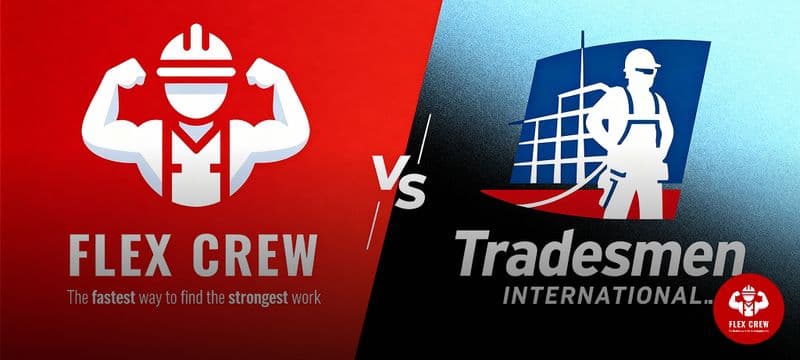Finding reliable seasonal workers for construction projects can make or break your deadline. With 14.6% of construction workers now classified as seasonal up from 12.9% in 2011 smart contractors are tapping into this growing workforce to stay competitive and profitable.
Whether you're planning a summer paving project or need extra hands for a spring build, understanding how to effectively hire and manage seasonal workers will save you time, money, and headaches.
What Are Seasonal Workers and Why Construction Companies Need Them
Seasonal workers are employees hired for specific periods, typically 6 months or less, to meet increased demand during peak construction seasons. Unlike permanent staff, these workers know their employment has a defined end date tied to project completion or weather patterns.
In construction, seasonal employment patterns closely follow weather cycles. Most hiring happens in early spring when conditions improve and continues through summer into early fall. This timing allows companies to scale their workforce quickly without the long-term commitment of permanent hires.
Key benefits of seasonal workers include:
- Immediate availability to start working
- Cost-effective labor solution during peak periods
- Access to specialized skills for specific projects
- Flexibility to adjust workforce size based on demand
The numbers tell the story: seasonal workers now represent a larger percentage of construction crews than ever before, with companies relying on this flexible workforce to complete projects on time and within budget.

When Construction Companies Hire Seasonal Workers
Smart construction firms start their seasonal hiring process in late winter or early spring, well before peak season begins. This early start provides several advantages:
February - March: Initial recruitment and screening phase
- Post job openings and begin accepting applications
- Screen candidates and conduct preliminary interviews
- Start building your seasonal worker database
March - April: Active hiring and onboarding
- Finalize hiring decisions and extend offers
- Complete background checks and documentation
- Conduct safety training and orientation programs
April - October: Peak employment period
- Deploy workers to active job sites
- Manage schedules and coordinate with project timelines
- Monitor performance and address any issues
Starting early gives you first pick of the best candidates before competitors snag them. Many seasonal workers, including students and teachers looking for summer employment, begin their job search in late winter.
Companies that wait until they desperately need workers often struggle to find quality candidates and end up paying premium rates for last-minute staffing solutions.
Common Challenges with Seasonal Workers (And How to Solve Them)
High Turnover and Skill Variations
Seasonal workers bring different experience levels, and some may leave mid-season for better opportunities. Combat this by:
- Conducting thorough skill assessments during hiring
- Pairing new workers with experienced mentors
- Offering competitive hourly rates ($25-$33 per hour, like NYC's DOT positions)
- Creating clear advancement pathways for high performers
Safety Training Concerns
Temporary workers face higher injury risks than permanent staff, according to NIOSH data. Address this by:
- Providing identical safety training to all workers, regardless of employment duration
- Conducting knowledge assessments to verify understanding
- Requiring proper PPE usage from day one
- Implementing regular safety check-ins and toolbox talks
Scheduling and Coordination Issues
Managing multiple temporary workers across different projects requires organization:
- Use workforce management software for real-time scheduling
- Establish clear communication protocols
- Create detailed job descriptions with specific expectations
- Implement mobile apps for instant updates and coordination
Legal Compliance Complexity
Labor laws vary by state and worker type. Ensure compliance by:
- Maintaining accurate work hour records
- Understanding seasonal worker benefit exemptions under ACA
- Keeping employment contracts current and legally compliant
- Staying updated on local wage and hour regulations
Best Practices for Managing Your Seasonal Workforce
Strategic Planning and Recruitment
Don't wait until you need workers to start looking. Analyze your historical data to predict seasonal labor needs and build relationships with reliable staffing agencies. FlexCrew USA specializes in connecting construction companies with pre-screened seasonal workers who are ready to contribute immediately.
Create a database of previous high-performing seasonal workers for future projects. These workers already know your processes and safety requirements, reducing training time and increasing productivity.
Streamlined Onboarding Process
Design an efficient onboarding system specifically for temporary workers. Focus on essential information:
- Company safety policies and procedures
- Project-specific requirements and timelines
- Emergency protocols and contact information
- Basic tools and equipment orientation
Skip lengthy benefit explanations and focus on what seasonal workers need to know to start contributing quickly.
Technology Integration
Modern workforce management tools can dramatically improve seasonal worker coordination:
- Time tracking apps with GPS verification ensure accurate payroll
- Mobile communication platforms provide instant project updates
- Scheduling software optimizes worker allocation across multiple sites
- Performance tracking systems identify top performers for future hiring
Clear Communication and Expectations
Establish regular communication channels between management, supervisors, and seasonal workers. Hold brief daily meetings to discuss:
- Project progress and upcoming tasks
- Safety reminders and hazard awareness
- Schedule changes or weather-related adjustments
- Performance feedback and improvement opportunities
Performance Management
Even short-term workers benefit from regular feedback. Conduct weekly check-ins to address issues quickly and recognize good performance. High-performing seasonal workers often return season after season, becoming valuable semi-permanent additions to your workforce.
Legal and Compliance Considerations for Seasonal Workers
Under the Affordable Care Act, seasonal workers (employed 6 months or less) are exempt from employer health insurance mandates. However, this doesn't mean you can ignore other legal requirements:
Employment Documentation:
- Maintain proper I-9 verification for all workers
- Ensure accurate classification as seasonal vs. temporary employees
- Document work hours, breaks, and overtime accurately
Wage and Hour Compliance:
- Pay applicable minimum wages and overtime rates
- Follow state-specific break and meal period requirements
- Track hours worked across multiple job sites
Workers' Compensation:
- Verify seasonal workers are covered under your policy
- Report injuries promptly and maintain detailed records
- Ensure proper safety training documentation
State-Specific Requirements: Different states have varying regulations for seasonal employment. Research requirements in your operating areas and consult with employment law experts when needed.
How FlexCrew USA Simplifies Seasonal Worker Management
FlexCrew USA understands the unique challenges construction companies face when hiring seasonal workers. Our comprehensive staffing solutions eliminate the guesswork and administrative burden of seasonal hiring:
Pre-Screened Worker Database: Access qualified candidates who've passed background checks and skill assessments
Flexible Staffing Solutions: Scale your workforce up or down based on project demands without long-term commitments
Compliance Support: We handle employment documentation, payroll processing, and regulatory compliance
Rapid Deployment: Get workers on-site quickly when project timelines are tight
Performance Tracking: Monitor worker performance and build relationships with top performers for future projects
Our network of seasonal construction professionals includes specialists in concrete, framing, electrical, plumbing, and general labor. When you partner with FlexCrew USA, you're not just hiring workers—you're gaining a strategic workforce management partner.
Maximizing ROI from Your Seasonal Workforce
Successful seasonal worker programs deliver measurable returns through:
Improved Project Completion Times: Adequate staffing prevents delays and keeps projects on schedule
Cost Control: Flexible workforce sizing matches labor costs to actual project needs
Quality Maintenance: Proper training and supervision ensure work quality standards
Future Workforce Development: Top seasonal performers often transition to permanent roles
Competitive Advantage: Reliable seasonal staffing allows you to bid on more projects confidently
Track metrics like project completion rates, safety incidents, and worker retention to measure your seasonal program's effectiveness. Companies with well-managed seasonal worker programs often see 15-20% improvements in project profitability.
FAQs About Seasonal Workers in Construction
Q: When should construction companies start hiring seasonal workers? A: Start recruiting in late winter (February-March) for spring and summer projects. Early hiring ensures access to the best candidates before competitors and allows time for proper training and onboarding.
Q: What's the average pay rate for seasonal construction workers? A: Seasonal construction workers typically earn $25-$33 per hour, depending on location, skills, and project complexity. Specialized roles command higher rates than general labor positions.
Q: Are seasonal workers eligible for health insurance benefits? A: Under the Affordable Care Act, seasonal employees (working 6 months or less) are exempt from employer health insurance mandates. However, employers can choose to offer benefits to seasonal workers if desired.
Q: How long can someone work as a seasonal employee before becoming permanent? A: If a seasonal employee works more than 6 months, they may no longer qualify as seasonal under federal guidelines and should be evaluated for permanent status and benefits eligibility.
Q: What safety training do seasonal construction workers need? A: Seasonal workers should receive identical safety training to permanent employees, including hazard identification, PPE usage, first aid, and site-specific safety protocols. NIOSH recommends knowledge assessments to verify understanding.
Q: Can seasonal workers in construction collect unemployment benefits? A: Eligibility varies by state, but many seasonal workers can collect unemployment between seasons if they meet state-specific requirements for wages earned and work history.
Q: How can construction companies find reliable seasonal workers? A: Partner with specialized staffing agencies like FlexCrew USA, build relationships with trade schools, maintain databases of previous high-performing seasonal workers, and start recruiting early in the season.
Q: What's the difference between seasonal and temporary construction workers? A: Seasonal workers are hired for predictable periods tied to weather or project cycles (typically 6 months or less). Temporary workers may be hired for shorter, unpredictable periods to fill immediate staffing gaps.
Q: Do seasonal construction workers need different insurance coverage? A: Seasonal workers should be included in your workers' compensation coverage. Verify with your insurance provider that seasonal employees are properly covered under your existing policies.
Q: What regions hire the most seasonal construction workers? A: Northern climates with harsh winters see the highest seasonal employment, particularly in road construction, paving, and outdoor building projects. States like Minnesota, Wisconsin, Michigan, and the Dakotas have strong seasonal construction markets.



